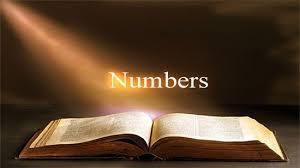Why Read Numbers?

The later traditions of both Jewish and Gentile communities have taken up the book of Numbers in important ways. Rabbi Sha’ul in the B’rit Chadashah letter to First Corinthians recalls the story of the wilderness generation in Numbers as an example for his contemporary readers: These things happened to them as an example, and were written down for our instruction (1 Cor 10:11). The Aaronic blessing (to see link click Bb – The Aaronic Blessing) has formed an important part of both Jewish and Gentile worship practices throughout the centuries.
The book wrestles with the transition from the old Exodus generation of rebellion (see Ag – The Rebellion of the Exodus Generation) to the new wilderness generation of hope (see Ec – The Second Census: The New Generation of Hope). How is faith transferred from one generation to another? How does the story of the past become fresh and alive for a new generation?
The book of Numbers helps us to understand boundaries, in a wide variety of ways: boundaries between old and new generations; boundaries between Isra’el and the Gentile nations; boundaries between God’s holy presence and a sinful Isra’el; boundaries of authority between leaders and followers; boundaries that divide tribal territories; boundaries between wilderness and the Promised Land; boundaries between being ritually clean and unclean; boundaries between blessings and curses; boundaries between intentional sin and accidental transgression; boundaries between Ha’Shem’s judgment and ADONAI’s forgiveness.
The conflicts and struggles over these boundaries create a dialogue of varied voices. The dominant voice of Numbers Chapters 1 through 10 is obedience and order, but the underlying voice of danger and death lurks just under the surface. In Numbers 11 through 25, death, disorder, and rebellion suddenly overwhelm us with the dead bodies of the Exodus generation strewn all over the desert floor of Isra’el’s forty-year wilderness wanderings. But the same chapters are also mixed with the whispers of hope for a new generation and its eventual arrival in the Promised Land of Canaan.
Chapters 26 through 36 focus on the story of the people of this new generation of hope as they prepare to enter the Promised Land, much as their parents had done a generation earlier. The overall voice in these concluding chapters is positive and hopeful. But the reader also hears lingering threats, warnings, and conflicts over boundaries that are negotiated and temporarily resolved. By the end of Numbers, the holy camp of God’s people is set to continue its march toward the Promised Land with the warnings of the past and the promises of the future in a dynamic dialogue of warning and promise.
The experience of the Church today has many notable parallels that were faced by the Israelites in the book of Numbers. As has often been true throughout history, the Church struggles to move forward in a cultural wilderness filled with competing temptations, conflicts over authority, and both the potential promise and problems involved in facing people from other cultures, other faiths and other concerns. Scripture provides an important resource for a time such as today. Numbers may be especially appropriate to help guide us through the contemporary wilderness of pluralism, the downgrade into worldliness, transgenderism, homosexuality and the shifting foundation of God’s people in this century.8



Leave A Comment